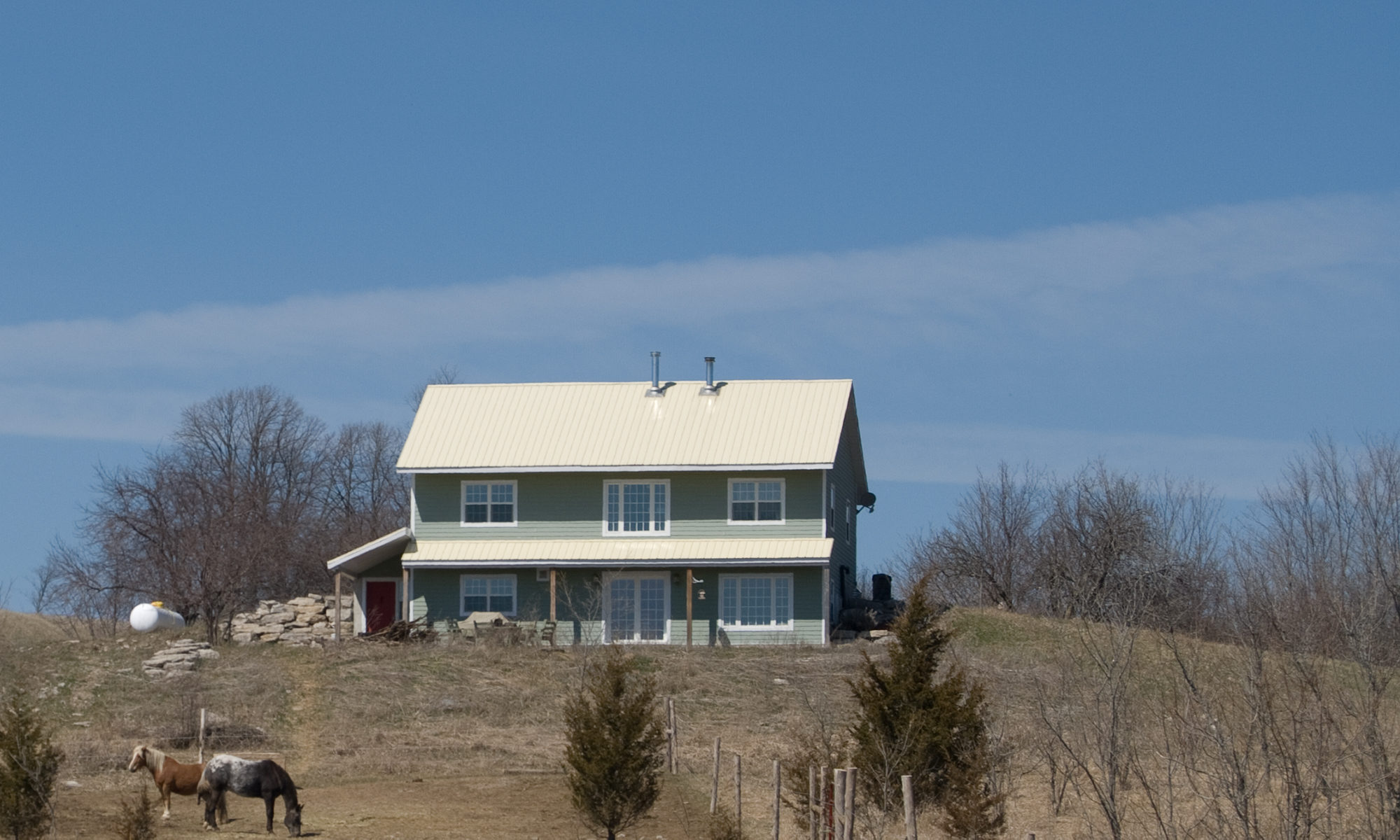An important aspect of green building is to provide sufficient insulation in your building. Insulation is what keeps the heat in during the winter and the heat out during summer. The most common forms of insulation are fibreglass batt (Pink Insulation), mineral wool batt (Roxul), cellulose, and foam. Two of the main things you want insulation to do is to slow the movement of heat, and to slow the movement of air. You want to stop air movement, since if the air can move through the insulation, it will take heat with it.
The advantages to fibreglass and mineral wool is the ease of installation. They are flexible and will allow you to friction fit them into the stud spaces in the wall. Of the two, mineral wool has a number of advantages. The first is that it is fireproof, and so will slow the spread of fire in a building. The second is that it is made of molten basalt rock which is a very common rock that is easily quarried, and slag which is a recycled material. It also is denser than fibreglass which reduces air infiltration and makes it less prone to slumping. It is also waterproof, so if it gets wet, it will not lose its insulating properties. If fibreglass gets wet, it turns into a sodden mass that has little or no insulating properties. Some people also find Roxul easier to work with.
Cellulose is a recycled material made from ground up newspapers and borax ( a fire retardant and insect repellent). It is very commonly used as an attic insulation as it is blown in, lowering the labor costs for installation. It can also be used in walls, but must be either blown in wet, so it sticks together (this requires a special machine that is rarely available to do it yourselfers), or be blown in behind a mesh. The advantages of cellulose is that it has a lower air infiltration rate than batt insulation, it will get into all the nooks and crannies in a wall, and it is a recycled material. The major disadvantage is that in walls it is more difficult to install than batt insulation.
The third most common form of insulation is foam insulation. This is available in a number of forms, including extruded polystyrene (solid boards, usually blue or pink), expanded polystyrene (made of many small beads that are stuck together) and sprayed in place foams (usually polyurethane, but there are others). The extruded polystyrene (XPS) is one of the best solutions for places where the insulation will be buried, or have weight on top of it, such as under concrete floors in basements. Expanded polystyrene (EPS) can also be used for insulating underground walls and is commonly used in the manufacture of Insulated Concrete Forms (ICFs, will be discussed in a later post), however it is not as strong as XPS, but is generally cheaper. Both XPS and EPS can be used in frame walls, but is generally used on the outside of the wall as an external insulation. One of the best insulations for frame walls is sprayed in place foam, as it will form an airtight seal and will fill all the nooks and crannies in the wall, however, it is the most expensive and can only be installed by professionals.
In designing a energy efficient house, insulation will play a major role. For the walls you will want at a very minimum 6 inches of insulation (R20), but more is better. For ceilings go for as much insulation as you can up to about 18 inches (R60), with a minimum of 12 inches (R40). There are ways to get more insulation in the walls and attic, which will be discussed in a later post. Not only is the amount of insulation important, the way it is installed is also important. Batt type insulation must be installed so that it fits snugly into the wall cavities, but it should not be compressed. It is the air pockets in the insulation that provide the insulating properties, and if it is compressed, it loses this insulating property. There must also be no gaps in the insulation, as this provides a direct path for heat to escape.
Air movement, also called air infiltration, must be minimized through the insulation. Although some heat is lost by conduction through the insulation, most of the heat loss in a building is through air movement through the walls. With batt insulation the air movement is stopped by the vapour barrier (a polyethylene plastic installed on the inside of the wall). For the best performance, the vapour barrier must be made as air tight as possible by taping all the seams, using plastic boxes around electrical boxes, and caulking any penetrations through the vapour barrier by things such as wires and plumbing pipes. The lack of air infiltration is one of the major advantages of foam insulation, as it stops almost all air movement as part of its nature.

Insulation is an excellent way to make your house energy efficient. Before doing the insulation, it’s highly recommended to do some inspection on the house to rule out all air leaks. There is no point in insulation if you haven’t weatherized your home.